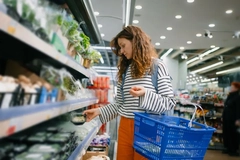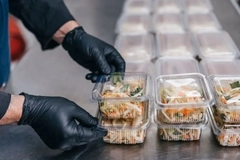Flexible packaging prices surge amid continued violence in the Red Sea

06 May 2024 --- Attacks on shipping vessels in the Red Sea are raising flexible packaging prices, according to analysts. Plastic and metal material prices have surged as much as 27% and 57% higher than at the beginning of 2020, with plastics particularly impacted. While the paper industry has yet to be hit, pulp prices are now also expected to rise.
Houthi militants continue their campaign of hijacking and assaulting cargo moving toward and around the Suez Canal, in the Red Sea, Gulf of Aden and Indian Ocean, in what they say are anti-Israeli actions meant to pressure a ceasefire in Gaza.
Last week, Houthi spokesperson Yahya Saree announced the attacks are entering a new phase of escalation in which its fighters could begin targeting ports in the Eastern Mediterranean. Flexible Packaging Europe (FPE) shows that in Q1 of this year, prices rose for HDPE (up 2.3%) and LDPE (up 4.1%), continuing a steady upward trend seen in the second half of 2023.
Biaxially oriented PP films (BOPP) film (20-microns) surged 12% and now stands at a price last seen in Q2 of 2023. Biaxially oriented polyamide (BOPA) film rose 2%, while 12-micron PET gained 4%, pushing it near its early 2023 price. Only 60gsm one-sided coated paper remained steady, with no change compared to the final three months of last year.
.png) Flexible plastic prices have risen as much as 27% since 2020.Guido Aufdemkamp, executive director of FPE, comments: “If anything, there is more uncertainty in the market than there was at the end of last year. Escalating tensions in the Middle East generally and the continued threat to shipping in the Red Sea has caused major disruption in the supply chain. The war in Ukraine also continues to have an impact both on supply and wider European demand of packaging materials and packaged goods.”
Flexible plastic prices have risen as much as 27% since 2020.Guido Aufdemkamp, executive director of FPE, comments: “If anything, there is more uncertainty in the market than there was at the end of last year. Escalating tensions in the Middle East generally and the continued threat to shipping in the Red Sea has caused major disruption in the supply chain. The war in Ukraine also continues to have an impact both on supply and wider European demand of packaging materials and packaged goods.”
“These issues are not likely to go away in the near future. But it seems the extreme destocking has come to an end in most segments and restocking to a more normal level has begun slowly. This factor, combined with a cautious upturn in demand, as prices and inflation stabilize, could mean the market for flexible packaging materials in Europe is set for modest growth later this year.”
Metal and paper hits
FPE says that across-the-board prices are still below the levels seen at the start of 2023, with both aluminum foil (down 16%) and 60gsm one-sided coated paper (down 24%) leading the way. However, in comparison with the Q1 2020 benchmark prices remain between 27% (BOPP) and 57% (aluminum foil) higher.
Santiago Castro, an analyst at Wood Mackenzie, interprets the latest figures: “Prices paid in Europe for flexible packaging materials mostly increased in Q1 2024. This was the case for BOPET, BOPA, and BOPP, which experienced the most significant increase. Prices paid for paper remained unchanged, but price increases are expected during Q2 due to increases in the cost of pulp.”
“Aluminum foil saw additional price decreases due to conversion cost reductions. Although overall demand has improved for all substrates, mainly this has been due to restocking. End-user demand remains weak, but there are signs of improvement.”
Vincent Clerc, chief executive of Denmark’s AP Møller-Maersk, one of the world’s biggest shipping container companies, recently announced that he does not expect the situation to improve soon. The company has been rerouting its vessels around the Cape of Good Hope since the attacks began, raising time and costs.
By Louis Gore-Langton











